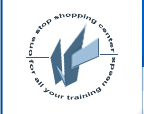Overview
After you master the basics of using Microsoft® Word 2016 such as creating, editing, and saving documents; navigating through a document; and printing, you're ready to move on to tackling the more advanced features. These features enable you to create complex and professional documents with a consistent look and feel. They also enable you to automate tedious tasks such as preparing a letter to send to every customer of your organization.
Creating professional-looking documents can help you give your organization a competitive edge. Implementing time-saving features such as document templates and automated mailings helps your organization reduce expenses. Mastering these techniques will make you a valued employee in your organization.
This course covers Microsoft Office Specialist exam objectives to help students prepare for the Word 2016 Exam and the Word 2016 Expert Exam.
Course Objectives
In this course, you will learn to create and modify complex documents and use tools that allow you to customize those documents.
You will:
- Organize content using tables and charts.
- Customize formats using styles and themes.
- Insert content using quick parts.
- Use templates to automate document formatting.
- Control the flow of a document.
- Simplify and manage long documents.
- Use mail merge to create letters, envelopes, and labels.
Prerequisites
To ensure your success in this course, you should have end-user skills with any current version of Windows®, including being able to start programs, switch between programs, locate saved files, close programs, and access websites using a web browser. For example, you can obtain this level of skills and knowledge by taking either of the following courses, or any similar courses in general Microsoft Windows skills:
- Using Microsoft® Windows® 10
- Microsoft® Windows® 10: Transition from Windows® 7
Target Student
This course is designed for students who wish to use Microsoft Word to create and modify complex documents and use tools that allow them to customize those documents.
Course-specific Technical Requirements
Hardware
For this course, you will need one computer for each student and one for the instructor. Each computer will need the following minimum hardware configurations:
- 1 GHz or faster 32-bit or 64-bit processor
- 1 gigabyte (GB) RAM (32-bit) or 2 GB RAM (64-bit)
- 25 GB available disk space
- DirectX 10 graphics card and a 1,024 × 576 or higher resolution monitor (1,024 × 768 resolution or higher monitor recommended)
- Keyboard and mouse (or other pointing device)
- Network cards and cabling for local network access
- Internet access (contact your local network administrator)
- Printer (optional) or an installed printer driver
- Projection system to display the instructor's computer screen
Software
- Microsoft® Office Professional Plus 2016
- Microsoft® Windows® 10 Professional or Enterprise
- Although it may be possible to deliver course content by using Microsoft Office Word 2016 on a Windows 7/8/8.1 installation, this course was written and tested on Windows 10 Pro. If you plan to teach this course using a different version of Windows, you should key through the course completely to note what will be different before you deliver the course to students.
Course duration
1 Day
Course outline
Lesson 1: Organizing Content Using Tables and Charts
TopicA: Sort Table Data
TopicB: Control Cell Layout
TopicC: Perform Calculations in a Table
TopicD: Create a Chart
TopicE: Add an Excel Table to a Word Document (Optional)
Lesson 2: Customizing Formats Using Styles and Themes
TopicA: Create and Modify Text Styles
TopicB: Create Custom List or Table Styles
TopicC: Apply Document Themes
Lesson 3: Inserting Content Using Quick Parts
TopicA: Insert Building Blocks
TopicB: Create and Modify Building Blocks
TopicC: Insert Fields Using Quick Parts
Lesson 4: Using Templates to Automate Document Formatting
TopicA: Create a Document Using a Template
TopicB: Create and Modify a Template
TopicC: Manage Templates with the Template Organizer
Lesson 5: Controlling the Flow of a Document
TopicA: Control Paragraph Flow
TopicB: Insert Section Breaks
TopicC: Insert Columns
TopicD: Link Text Boxes to Control Text Flow
Lesson 6: Simplifying and Managing Long Documents
TopicA: Insert Blank and Cover Pages
TopicB: Insert an Index
TopicC: Insert a Table of Contents
TopicD: Insert an Ancillary Table
TopicE: Manage Outlines
TopicF: Create a Master Document
Lesson 7: Using Mail Merge to Create Letters, Envelopes, and Labels
TopicA: The Mail Merge Feature
TopicB: Merge Envelopes and Labels
Appendix A: Microsoft Office Word 2016Exam 77-725
Appendix B: Microsoft Office Word 2016 Expert Exam 77-726
Appendix C: Microsoft Word 2016 Common Keyboard Shortcuts
|



